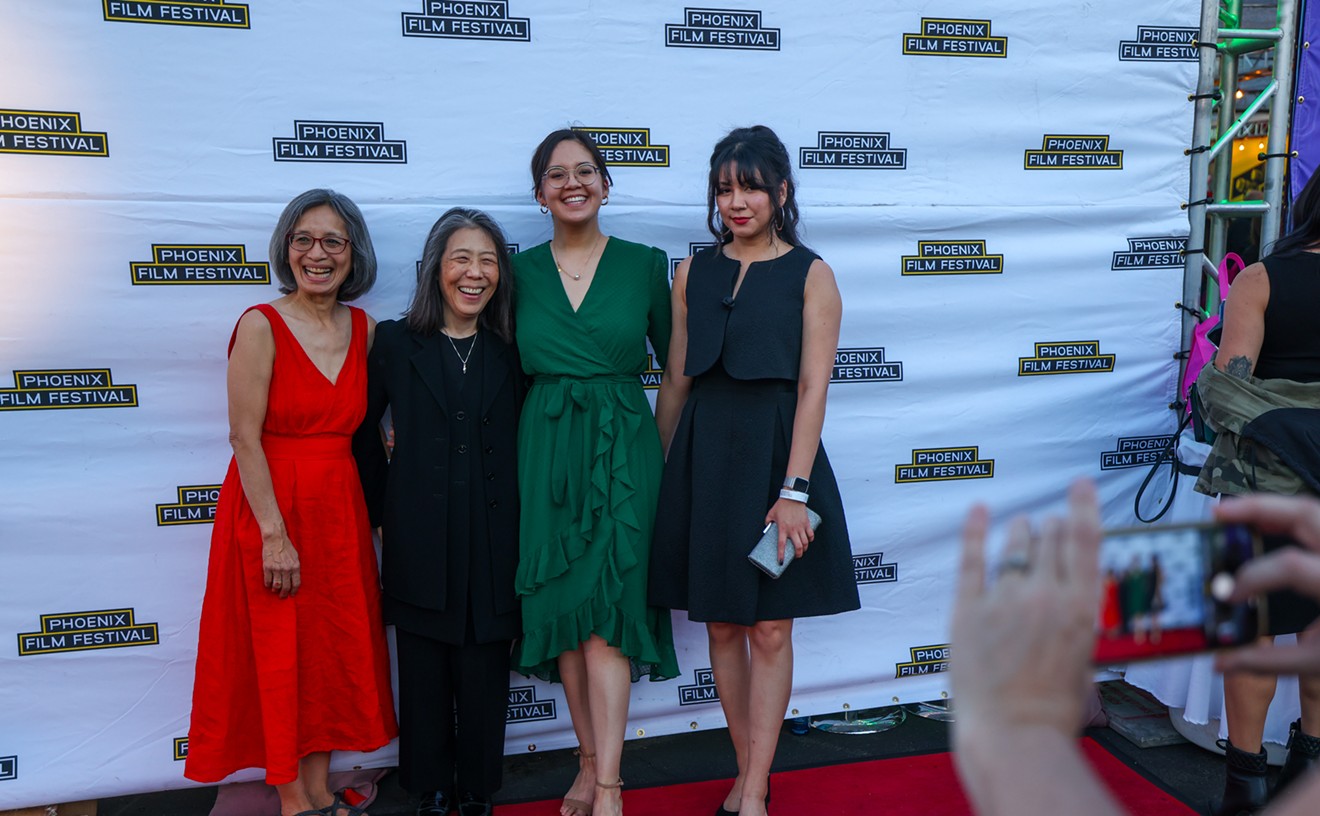Putting these particular artists together in one show is sort of like pitting Al Gore against Jack Black in a boxing match — unexpected, but potentially really entertaining.
Carl Andre is revered as a founding father of Minimalism, a rather somber art movement that sprouted in the late 1950s. It's a seemingly soulless movement that evolved in violent reaction to the existential angst of New York's macho Abstract Expressionist painters like Jackson Pollack, Willem de Kooning, and Mark Rothko. It was, perhaps, the perfect aesthetic expression for Andre, who, in the 1980s, was tried and eventually acquitted of the murder of his Cuban-born wife of five years, body artist Ana Mendieta — an event that split, O.J. Simpson-style, New York's art world into two camps.
Minimalists used commercially mass-produced materials like steel plates, concrete blocks, and fluorescent light bulbs to produce geometric, often repetitive, forms that had no meaning apart from what they were. Minimalists spent more time writing about their art than making (actually, assembling) it. The art quickly became fraught with anti-establishment, anti-commodity sentiment and weighted down with Marxist mumbo-jumbo so opaque, pretentious, and indecipherable that it kept me from reading Artforum for a good 10 years.
Glarus Steel Slant (2006) is a classic example of Carl Andre's metal floor art oeuvre, which first appeared in 1967. A long, flat, diagonal walkway to nowhere assembled from repetitive patinated metal plates, the piece slices the gallery floor space in two. That's it. No more. No less. Except for the fact that ASUAM visitors are actually allowed to walk on the art, in complete contrast to my museum and gallery experiences with Andre's floor sculptures. Usually, his work is sacrosanct and off-limits to visitor contact, whether by foot or otherwise. In view of this, I took particular delight in slowly ambling down the length of Andre's piece as if it were a catwalk.
The sculptures of 48-year-old native Californian Tim Hawkinson stand in razor-sharp counterpoint to Andre's. Quirky, overtly representational and demonstrably human-centric, they're not a part of any namable contemporary art movement, though I suspect that they've been influenced in part by the low-tech, Rube Goldberg-like constructions of Dennis Oppenheim.
Hawkinson specializes in breaking down reality and reconstructing it with ordinary, usually scavenged and often personal materials such as fingernail clippings, hair, and rubber "skins" taken from various parts of the artist's body. Many are self-referential or concerned with the internal workings that drive humans, both physical and psychological. In an earlier work, Penitent (1994), he used rawhide chews for dogs to construct a human skeleton, the ribcage of which contains a glass contraption that emits dog-call whistles. Self-explanatory Gun (1998) was fashioned from bread and newspapers, which he claims are two basic elements.
Perhaps his best-known work is Überorgan (2000), which has appeared in various incarnations at Massachusetts Museum of Contemporary Art, New York's Whitney Museum of American Art and the Getty Center in Los Angeles. A strange mating of bagpipe, player piano, and pipe organ, Überorgan is a gigantic, snaking, intestine-shaped musical instrument Hawkinson crafted from thousands of yards of plastic sheeting (at Mass MOCA, it filled a gallery 300 feet long and 28 feet high). Installed at the Getty, it looked like an overgrown, twisted hamster play-tube that emitted indescribable, teeth-rattling asthmatic groans.
The Hawkinson pieces appearing in ASUAM's show, lent by PaceWildenstein, the artist's New York gallery, are considerably toned down from what I expected from Hawkinson. Totem (2007) is cobbled together from discarded plastic jugs piled on top of one another, then covered with loops of twine and brown papier-mâché. The treatment makes the looming work, which bears no small resemblance to an anorexic tiki god with a hard-on, take on the appearance of wood.
As for his other two pieces, I was initially turned off by Hawkinson's use of bronze, with its signature preciousness, instead of the quotidian Ace Hardware elements so characteristic of his work. Both Monkey Brains (2007), a miniature monster truck with oversize wheels in the shape of brains, and Doorstop (2007), a doorstop crowned with a bronze version of the artist's big toe, are under separate Plexiglas vitrines, as any art object traditionally would be presented in a museum. And that, I think, was Hawkinson's very point: Putting an object made of expensive materials, no matter how absurd, under glass and presenting it as art doesn't necessarily make it so.










